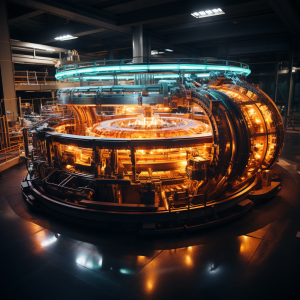
What are the principles of statistical mechanics, and how do they relate to thermodynamics?
Introduction
Statistical mechanics is a branch of physics that uses probability theory and statistics to explain the behavior of a large number of particles in a system. By describing how the microscopic constituents of a system result in macroscopic phenomena, it provides a bridge between microscopic (atomic) and macroscopic (thermodynamic) descriptions. In essence, statistical mechanics is the microscopic foundation of thermodynamics.
Atoms, Molecules, and Thermodynamic Systems
At the heart of statistical mechanics is the understanding that matter is composed of atoms and molecules, which are in constant motion. A thermodynamic system, whether it’s a gas in a cylinder, a cup of coffee, or a star, contains an enormous number of these particles—on the order of Avogadro’s number (approximately 6.022 x 1023 particles per mole). The behavior of any one particle is influenced by quantum mechanics and classical mechanics, but when you consider a system with so many particles, the complexity is unimaginable. This is where statistical mechanics comes in.
Microstates and Macrostates
Statistical mechanics introduces the concepts of microstates and macrostates. A microstate describes the state of every single particle in the system, specifying properties like position and momentum. A macrostate, on the other hand, describes the system’s large-scale properties, such as temperature, pressure, and volume.
There are usually a gigantic number of microstates corresponding to any given macrostate. For instance, there are countless ways that the speeds and positions of the molecules in a gas can be arranged while still having the same temperature, pressure, and volume.
Statistical Distributions and Ensembles
To manage the daunting task of dealing with such a vast number of microstates, statistical mechanics introduces the idea of statistical ensembles, collections of hypothetical systems (or copies of the actual system) used to calculate average properties. Three fundamental ensembles—the microcanonical, canonical, and grand canonical ensembles—reflect different physical situations depending on whether energy, particle number, and/or volume are held constant or allowed to fluctuate.
Statistical distributions like the Maxwell-Boltzmann, Fermi-Dirac, and Bose-Einstein distributions describe the likely distribution of particles among available energy states under different conditions. These are critical for understanding different types of systems, from ideal gases to metals to superconductors and superfluids.
Link to Thermodynamics
The principles of thermodynamics arise naturally from statistical mechanics. The first law of thermodynamics (conservation of energy) is essentially a statement about the energy of the microstates of a system. The second law of thermodynamics, stating that entropy always increases, can be understood as a statistical fact: there are more microstates corresponding to higher entropy macrostates, so systems naturally evolve toward these states. The concept of temperature also emerges naturally as a measure of how the number of accessible microstates changes with energy.
Conclusion
Statistical mechanics provides a way to bridge the gap between the microscopic world of particles and the macroscopic world of thermodynamics. By using the powerful tools of statistics and probability, it allows us to understand and predict the behavior of complex systems with an unimaginable number of particles. Whether it’s understanding phase transitions, predicting the properties of gases, or explaining the workings of lasers, statistical mechanics provides a fundamental framework for explaining the world around us.




